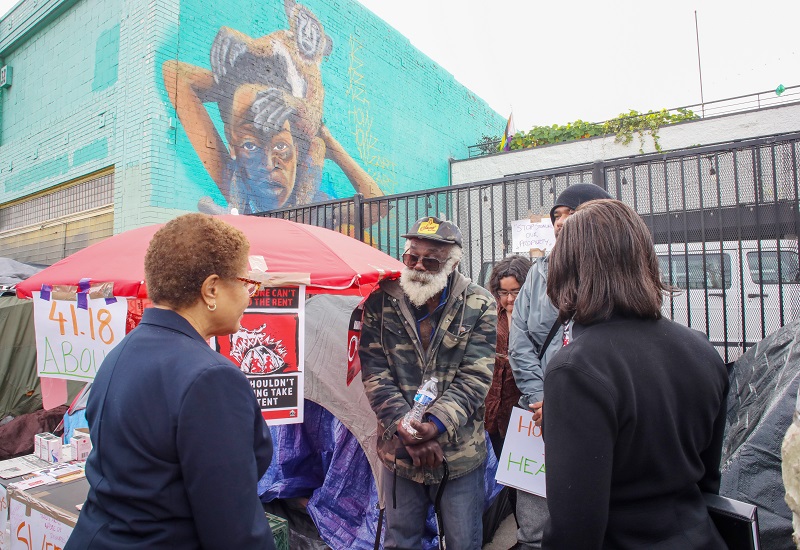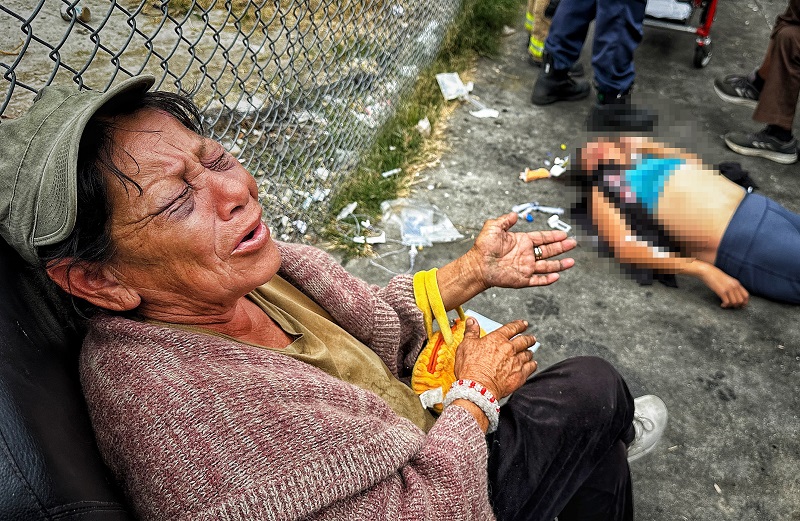
However, questions still linger. Are the figures released by the mayor after her first six months in office truly groundbreaking? Do they resonate with the public? And most importantly, are homeless individuals genuinely being lifted off the streets?
On the morning of June 13, the LA Mayor’s office held a press conference to announce the progress and future prospects of homelessness relief.
It was revealed that a total of 14,381 people out of the projected 40,000 (estimated by the city for 2022) have been rescued from the streets and provided temporary accommodations.
“Since my first 100 days in office, we have seen significant growth in the number of homeless individuals who have found relief,” stated Mayor Karen Bass. “From December 2021 to May 2022, there has been a remarkable 27.9 percent increase compared to the previous year.”
The mayor added, “While homeless people and tents may still be visible here and there, we are convinced that they never truly preferred the streets.”
Simultaneously, the city emphasized that the objective is not solely to eradicate tents but also to swiftly provide mental health services, permanent housing, and social security benefits to ensure homeless individuals do not return to the streets.
Regarding the Korean American neighborhoods encompassed within District 10, two camp demolitions have occurred in the past month.
“There have been recent operations in District 10 that have significantly reduced the number of tents,” said Va Lecia Adams Kellum, CEO of the Los Angeles Homeless Services Authority (LAHSA). “We hold bi-weekly meetings with city, county, and federal agencies to assess the scope of our efforts and determine the areas requiring attention.”

The office of 10th District Councilmember Heather Hutt responded by stating that all data and information come directly from LAHSA. However, this claim has drawn some criticism for its lack of responsibility. The actions taken by the 10th district stand in contrast to neighboring Districts 2 and 3, where information is shared more fluidly, and district-led enforcement is encouraged.
“When tents are set up behind the building, homeless individuals come and go, causing trouble. We call the police, but it seems like we’re just wasting time,” expressed Hyunki Kim, a 60-year-old retail store owner near Western Avenue and Fifth Street. “We’re told that someone is in charge of the district, but there’s no communication.”
When questioned by reporters about the rate at which homeless individuals return to the streets, Kellum acknowledged, “We are not perfect. We have a 5% exit rate from our 35 motels.” She added, “It is important to understand that providing relief for homeless individuals requires extensive effort and time.”
Nevertheless, Los Angeles has already allocated over $100 million in the first six months and plans to spend $1.3 billion on addressing homelessness in next year alone. Currently, the city has set aside $3 million to relocate and support individuals living in RVs.
This funding is swiftly progressing through the city council with limited scrutiny under the banner of “rapid intervention.” Some believe this may become a source of frustration for Mayor Bass later in her term.
“Mayor Bass’s office shouldn’t be complacent and say, ‘We did it,’ but should take the time to ensure that taxpayer dollars are not wasted,” said a Korean-American official familiar with the city’s administration.
BY INSEONG CHOI [support@koreadaily.com]





